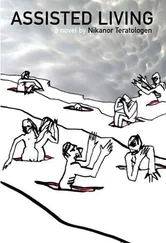It is precisely for this reason that I was filled with dismay on reading Michel Serres’ book Malfeasance . 14A sensation all the more acute because, until then, his efforts to ‘deterritorialize’ issues and concepts, to take them out of their fields of study and remove them from the temporalities in which they had been associated, represented a creative task which was at once daring and imaginative, teeming with connections, with translations, and with potentially rich and inventive relationships. Thus, in The Natural Contract , 15when he asks the question ‘What language do the things of the world speak, that we might come to an understanding with them, contractually?’, we are aware of the presence of an authentic network of analogies, which I would describe as generative, of analogies which enrich the terms of comparison, analogies which, through a series of interconnections, make us aware of qualities hitherto unperceived, and which are capable of reactivating an exchange of the forces of action, or agencies, between objects and living creatures. So is it with the earth, which, Serres tells us, speaks in terms of forces, of bonds and of interactions. In a later book, Darwin, Bonaparte et le Samaritain: une philosophie de l’histoire , Serres returns to this idea again, this time focusing more precisely on writing. Reading, he says, is not limited only to the codes of writing such as we normally understand it, and this is exemplified by good hunters, accustomed to reading, in the tracks left by wild boars, their age, gender, weight, size and a thousand other details: ‘The good hunter reads, having learned how to read. What does he decipher? A coded footprint. Yet this definition could equally well be applied to historic human writing itself.’ 16Because, Serres goes on to say, writing is the line traced by all beings, living or non-living, all of whom write ‘on things and between them, the things of the world one on top of the other’. The ocean writes on the rocky cliff, bacteria write on our bodies, everything – fossils, erosions, strata, the glow of galaxies, the crystallization of volcanic rocks – is there to be read. We could read before we could write, and this possibility opens writing to a great many other registers, like ‘an ensemble of traces which encode a meaning’. ‘If history begins with writing, then all the sciences enter, along with the world, a new history, one which does not forget.’ Of course, these are daring juxtapositions on the part of Serres, interpretations which link what seemed destined to remain unlinked – if only because human exceptionalism keeps a careful watch over these separations of register. And this is precisely what Serres is interested in, this task of abandoning the sordid habit of placing the human at the centre of the world and of its stories, and instead opening history to myriads of beings which matter and without which we would not be here.
Malfeasance takes a very different subject, as is clear from the book’s subtitle: Appropriation through Pollution ? From the very first pages, Serres turns his attention to territories: ‘Tigers piss on the edge of their lair. And so do lions and dogs. Like those carnivorous mammals, many animals, our cousins, mark their territory with their harsh, stinking urine or with their howling, while others such as finches and nightingales use sweet songs.’ 17Such practices, according to Serres, are the ways in which the living inhabit a specific space, establish it and recognize it. These places are defined and protected by male excrement. All of them constitute different ways of appropriating, whether by men or by animals: ‘Whoever spits in the soup keeps it; no one will touch the salad or the cheese polluted in this way. To make something its own, the body knows how to leave some personal stain: sweat on a garment, saliva or feet put into a dish, waste in space, aroma, perfume, or excrement, all of them rather hard things …’ 18Serres then observes that the verb ‘to have’, expressing possession, has the same origin in Latin as ‘to inhabit’. ‘From the mists of time’, he writes, ‘our languages echo the profound relationship between the nest and appropriation, between the living space and possession: I inhabit, therefore I have.’ 19For Serres, the act of appropriating stems from ‘an animal origin that is ethological, bodily, psychological, organic, vital ….’ not from a convention or from some positive right: ‘I sense there’, he writes, ‘a collection of urine, blood, excretions, rotting corpses.’ 20I have indicated already that, in this context, Serres is no longer concerned with a fight against anthropocentrism and against this strange historical amnesia to anything which is not human. His mission in this case is to mount an attack on all forms of appropriation through pollution, whether air pollution, the invasion of visual or sound space to which we are submitted in the form of advertising, cars, machines … all of them just as filthy and polluting as the excrements used to signal appropriation. ‘You obtain and keep what is properly yours through dirt,’ he writes, or, even more explicitly, ‘The spit spoils the soup, the logo the object, the signature the page: property, propriety, or cleanliness . The same word tells of the same struggle; in French, it has the same origin and the same meaning. Property is marked , just as the footstep leaves its imprint.’ 21
But this is not the reason for my severity towards him – quite the contrary in fact. That Serres should want to make us aware of, and outraged by, all the various market-driven operations of expropriation and appropriation is not the issue here, and I very much share his opinion on that subject. However, the fact that, for him, garbage and marks, as soiling gestures, are of animal origin seems to me all the more seriously problematic in that the gesture of appropriation is, in his view, synonymous with that of disappropriation and exclusion. 22The equation is too hasty. For this connection can be made only at the cost of a double simplification, a double negligence. Firstly, because it means forgetting that, for a tiger, a dog or a nightingale, territory does not equate to this or, indeed, to any one ‘single’ thing which could claim to unify a certain combination of types of behaviour. And, secondly, because this definition of ownership as a process of monopolizing and taking over seems to me to define living in a territory in too facile and simplistic a manner. By advocating a form of naturality in terms of territorial behaviour as an argument to denounce the right assumed by some people to pollute the air, the acoustic environment, shared things and space, Serres, without pause for question, associates the territorial behaviour of animals with a regime of possession and ownership and, as a result, assimilates it to a form of natural rights. In short, he attributes a modern and unchallenged conception of ownership to animals, turning the latter into petty little bourgeois property owners preoccupied with claiming exclusive ownership.
For me, it is not about wanting to defend the violated dignity of these animals caught up in a project which sets out to defend a damaged earth or polluted existences. But if we are indeed to reflect on the reappropriation of the earth, I believe that it is important to pay attention to the different ways of inhabiting it and to those who inhabit it alongside us. With this oversimplified ethology we are off to a very bad start.
It should be pointed out first of all that it is highly questionable to associate animal markings with dirtiness and to regard the latter as somehow the opposite of cleanliness. It is us , or most of us, who see excrement as dirty, but for many animals things are much more complicated. Anyone who has watched their dog wallowing enthusiastically in a decaying carcase or rolling in animal droppings will immediately understand that, as far as smells are concerned, we inhabit completely different universes. Secondly, putting mammals and birds in the same category is not really a good idea. True, marking and singing appear to share a common function in that both are done in order to signal presence. But mammals and birds have very different problems to resolve when it comes to announcing their presence and any similarities should be approached with considerable caution. It makes little sense to refer simply to ‘animals’. If certain birds – though this is more unusual – can indeed mark their presence by their droppings, they generally tend to favour the use of song and of what might be called intense demonstrations of their physical presence. Mammals, for the most part, have opted simply to suggest their presence. For most birds, territory is a site for display and spectacle. It is the place which enables the bird to be both seen and heard. Indeed, it would be perfectly reasonable to wonder if in certain cases (in the case of leks, or mating grounds, this is indisputably how things stand) it is not so much in order to defend their territory that birds sing and perform their various displays as that the territory provides them with a stage for those songs and displays. Some ornithologists have indeed suggested this to be the case.
Читать дальше












